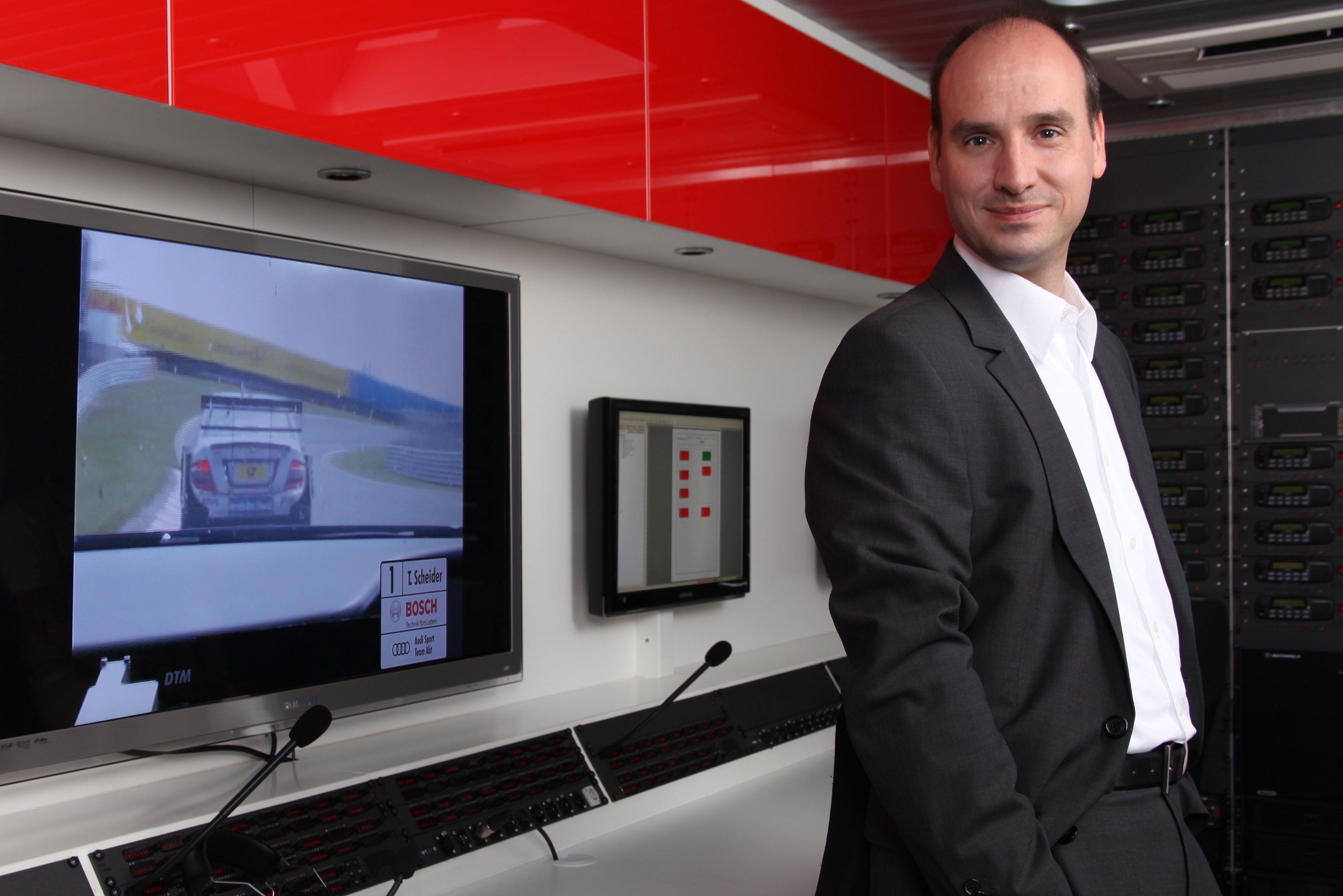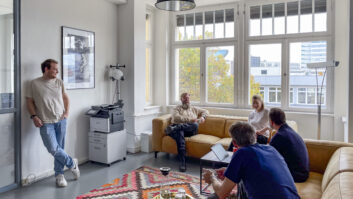
Paddy Baker talks to the Riedel founder, owner and CEO about the past history of the company, the present state of the industry and the future changes that more networking will bring.
What was your background before setting up the company? What was your interest in technology?
I could say there was no background. I was still at school at the time: in 1987 I founded the company and in 1989 I finished school. I think there were two things that made me interested in the industry. When I was around 12 years old I was interested in magic, and I started as a magician: I earned some money from that, and did shows until I was around 20. So that created a certain interest in entertainment.
Also I was interested in lighting and sound equipment. This was more of a hobby: I was arranging parties and hiring equipment from rental companies – at a certain point I thought we might as well buy this equipment because we needed it all the time. No-one else around me wanted to invest in it, so I said, “Would you mind if I invest and you rent it from me?” So that’s how I started – but it wasn’t even a business, I was 16 or so at the time. When I turned 18, I got the proper paperwork and started as a proper business. I thought I could do it for a couple of years before I knew what I wanted to study… I still haven’t started studying. If you ask what kind of education I had on this, it was none really. My school was the road.
Was it around the time that you founded the company officially that you started manufacturing?
Not exactly. We started as a lighting and sound rental company, but in around 1991 I bought some Mrola radios for a job. These were soon being rented out all over Germany while the other equipment was only being hired locally. So I took the decision to focus on communications in the entertainment and broadcast industry.
That focus needed more specialised solutions that I couldn’t buy from companies like Motorola. I started building my own headsets out of bits and pieces I could buy, and it was the same with our first manufactured product – a radio interface to make radios connect with two-wire and four-wire intercom. At that time I didn’t have a clue about comms systems – I didn’t even know what two-wire and four-wire meant – but I learned. That product, RiFace, still exists in our portfolio and we’ve sold thousands over the years.
Basically both divisions of the company were there in the early days – hire and service on one side, and manufacture on the other – when the company was still a one-man show.
When did the installation market start becoming important to Riedel?
That was pretty early on. I was interested in the theatre market, which is very much about installation. Theatre guys have a need for complex stage management systems – even more complex in the German-speaking market than in other markets. In the past, these systems had been built by companies like Siemens, which used to make more or less everything in electrical installations and electronics, but had just stopped them when I started to become involved. Some theatre people knew me from my radios and radio interface, and asked if I could help with a new system.
That was the driver for developing my first intercom – Riedel Compact, a 32 x 32 analogue audio matrix but with a PC module inside that gave digital control.
The theatre market gave me the opportunity to do installations of comms and radio systems, and we did quite a number of theatres – not only in Germany but also in Vienna and even Moscow. At a certain point I started talking to broadcasters and learning about their needs. Then there were some exhibition centres, like Messe Dusseldorf for instance, that were among our early installations. So installation has been part of what we do since very early on.
What would you say have been the biggest changes in the installation market that the company has had to respond to?
There were some things that were changing over time, and some things that never changed. There were changes in technology – going from analogue to digital systems, and then to networked installations – starting just with voice systems, but today a comms installation is not just about voice intercoms, it’s basically a universal control system that includes lots of features. These days I would even say that video is part of communications systems, as you can see in the consumer area with things like Skype.
What hasn’t changed – even as we went to different markets like install, or broadcast – is that all these clients want to talk to people who really understand the details, they want someone who is flexible and still strong, which is difficult. There are giant companies in the industry, but their strength is that they are big, and they have the background to do development; they’re not flexible at all. On the other hand, you find one-man shows – and these companies are extremely creative and flexible, but if they do one project it’s probably already too much. For a serious project you don’t want to bet on a one-man show. So a company is needed that is somewhere in between: strong enough to do big projects, but still keeping the flexibility.
Also keeping the company independent – there is no venture capital involved – so we can keep our passion; this is really important. We’ve just had a strategic meeting with the key people in Riedel, making goals for the next five years: we want to stay independent, we are independent concerning the financing (I own the company 100%), and we want to keep it like that. We will grow, but we don’t want to grow to a company doing $500 million. Today we’re doing about $100 million, which is a pretty nice size, but we’re flexible enough to do small projects and to suit this artistic world.
Regarding networking: Riedel currently has two proprietary protocols, RockNet and MediorNet. Do you feel that there will always be a place for proprietary rather than open protocols?
I wouldn’t say always. The future is certainly networked – there’s no doubt about that. However, all these standards – AVB, AES67 and so on – are not really there yet: they’re lacking a number of things when it comes to ease of use, plug and play, and interoperability. There are lots of companies who say ‘We have this standard’, but if you want to connect two devices that both claim to support AES67 and you ask, ‘Will this work?’, you don’t get a clear ‘yes’ – typically you get a ‘yes, but…’.
I think there’s a place for our solutions – however, we are integrating standards and we bet on standards. But it’s not black and white – and so, talking audio, we will have all three solutions: Layer 1, our own proprietary solutions; Layer 2, AVB; Layer 3, AES67 or anything else that could be accepted as a standard. Having this combination, we’re providing the solution that makes the investment safe. People who invest in our gear know that whatever becomes the real standard in the end, it’s already in because it’s the same hardware in our solutions that supports Layers 1, 2 and 3.
Do you have any messages for the Installation readership?
The products we launched recently – the Smartpanel and the Tango platform – we thought a lot about the fixed installation market for these, so it’s definitely worth looking at that. And we are open to building features into these projects that are not only developed by ourselves, but by clients or other partners – because I believe that these future solutions need to be networked not just in the sense of IT networking, but also in networking engineers from different companies.
We believe in good people working together and making things work. I’ve seen lots of good brands in this industry go down after they’ve been acquired by a bigger company. I much prefer small and medium-sized companies working together and building great things rather than putting things under a large umbrella.







